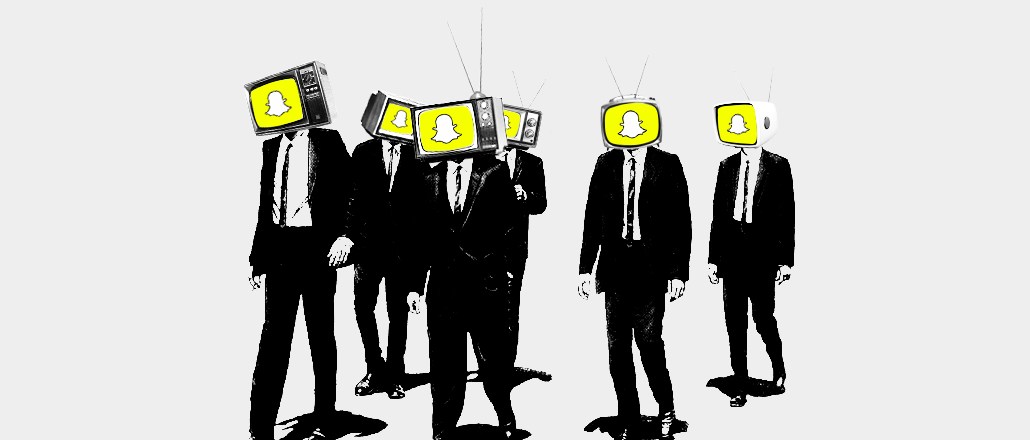‘They have the advantage’: What Snapchat’s new deal means for media

Snapchat wants to be like TV, and publishers need to adapt.
That’s the message from the news that Snapchat no longer wants to share ad revenue with its Discover media partners, according to a report from Recode. Instead, the company will pay licensing fees for the content and keep all the ad revenue — the approach TV networks take.
Snapchat’s new terms will have a seismic impact on media companies that have dedicated significant resources to Discover. While a licensing fee means guaranteed income, it also means a ceiling on how much money publishers can make on Discover. Bigger media companies that don’t need Snapchat’s money — just its audience — will be fine. Smaller publishers, however, might soon extinguish their Snapchat teams, or at least use Snapchat’s offer as a bargaining chip to wrestle money from other platforms. What’s clear is the shift to a licensing model will have knock-on effects in the constantly shifting, sometimes strained relationship between media companies and their new platform overlords.
Like any preemptive platform shift, there’s no shortage of media grousing. Snapchat has long been considered by media companies as the most inflexible of the social platforms. It’s made Discover an exclusive club that only a few dozen companies get to be a part of — and these partners had to commit to marketing their Discover channels and bringing in a certain amount of ad revenue in order to join. One media company that’s not on Discover was asked to bring in $50 million in ad revenue in the second year as part of any deal to join the platform, a source said.
“A lot of people continue to pull their hair out trying to work with [Snapchat],” said an executive at Snapchat Discover partner. “They have the advantage. Snapchat is literally the only remaining curated media platform that has this huge audience.”
It’s unclear how much Snapchat is willing to pay to license entire Discover channels, especially as the talks have just begun recently, sources said. That said, partners expect Snapchat to pay based on another old TV tradition: performance.
“ESPN gets $7 per subscriber, while smaller channels get mere cents per subscriber,” said a Discover partner. “Snapchat will also be doing that based on who you are and what you can bring them.”
Snapchat has never publicly broken out how many of its 150 million daily users visit Snapchat Discover. In a presentation to Discover partners at the end of June, the company said the median Discover channel had 1 million daily viewers. The top 10 percent of channels were averaging 3.5 million viewers at that time.
But that’s not to say the shift to a licensing model is bad for media companies. In fact, the set fees — so long as their high enough — could lead to a domino effect with other platforms like Facebook, which is already paying $50 million to nearly 140 media companies and video creators, including The New York Times and BuzzFeed.
“Now we can go to another platform and say, ‘This is the deal they’re offering, you have to give us something. The half-a-million bucks I’m using to create videos for Facebook? I might use that to create Snapchat content because I’m at least getting something back that’s measurable and consistent,’” said a publishing executive making content for Snapchat Discover and Facebook.
Snapchat is also willing to pay for original content made for Discover. It’s already struck deals with NBCUniversal and Viacom to make shows and continues to court other Hollywood producers, studios and networks to make short-form shows. Snapchat’s looked at budgets ranging from $40,000 to $70,000 per episode and has the ability to go bigger, sources previously said.
By aggregating the entire Snapchat Discover audience — not just focusing on individual shows and channels — Snapchat can very likely command higher premiums on ads. With CPMs already between $40 and $50, that’s steady income for a company that’s planning to go public next year.
“There is much more money to be made when you can aggregate all of those views,” said the TV network executive. “It’s just a better value proposition when you license — the TV business knows this.”
And, now, so does Snapchat.
Image by Matt Fraher
More in Media

Walmart rolls out a self-serve, supplier-driven insights connector
The retail giant paired its insights unit Luminate with Walmart Connect to help suppliers optimize for customer consumption, just in time for the holidays, explained the company’s CRO Seth Dallaire.

Research Briefing: BuzzFeed pivots business to AI media and tech as publishers increase use of AI
In this week’s Digiday+ Research Briefing, we examine BuzzFeed’s plans to pivot the business to an AI-driven tech and media company, how marketers’ use of X and ad spending has dropped dramatically, and how agency executives are fed up with Meta’s ad platform bugs and overcharges, as seen in recent data from Digiday+ Research.

Media Briefing: Q1 is done and publishers’ ad revenue is doing ‘fine’
Despite the hope that 2024 would be a turning point for publishers’ advertising businesses, the first quarter of the year proved to be a mixed bag, according to three publishers.





